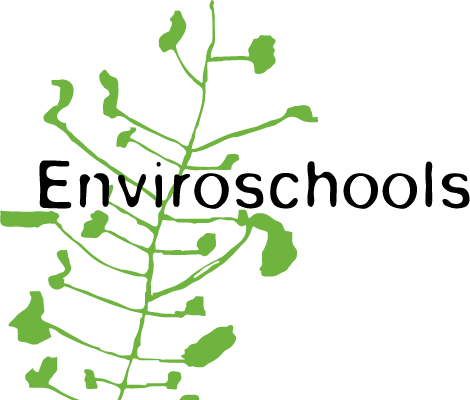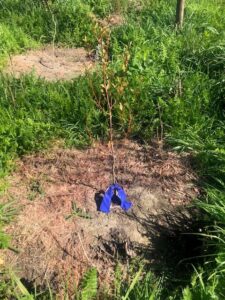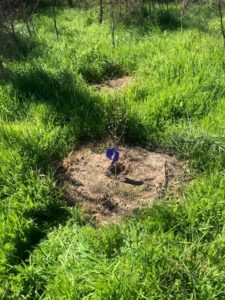Kahikatea Reserve
Earlier in the year, Tua Marina and Springcreek Schools teamed up to replant a section of the Kahikatea Reserve. This amazing restoration project was started 20 years ago. The aim being to return the land to original ngahere and water ways.
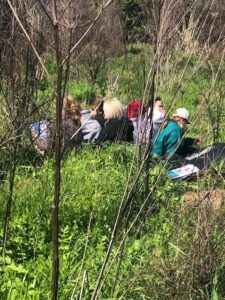
A group sitting quietly counting birds
When planting the damaged section, we could hear numerous birds in the maturing ngahere beside us. Of course we also had piwakawaka ducking and diving around us as we disturbed the insects that piwakawaka love to eat.
We came up with the idea of returning each year to do a bird count. Both in the 20-year-old section and the newly planted section. This would measure the success of the planting by tracking the number of birds returning to the damaged area as it grew.
This term the first bird count took place.
The rangatahi didn’t get the opportunity to explore the maturing ngahere when planting the damaged section. So that was where we headed first.
They were amazed by the beauty of the ngahere. The calmness they could feel as they entered and the way the light filtered through the canopy onto the many saplings emerging from the leaf litter. Quickly settling into a counting spot, some with binoculars in hand, they became serious citizen scientists as the counting began. In fact, so engrossed in the task at hand, they asked for extra time.
While the newly planted area didn’t have the wonder of the maturing ngahere. The scientists were no less focused, once again quickly settling into the task of counting.
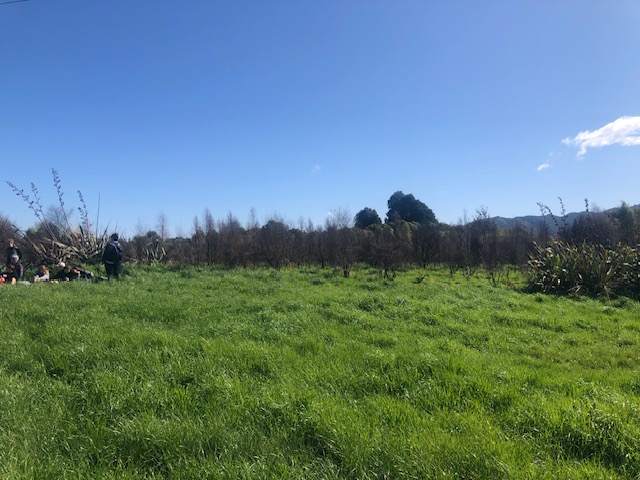
The newly planted area – we hope to see the greenery of the new plantings over take the burnt branches of the fire damaged trees.
To add another measure of success for the planting, rangatahi selected and tagged three trees to record their height each year. They also tagged the fence opposite as a place to take an annual photo for a visual record over time.
They may not have the opportunity to take part in next year’s annual bird count as they are heading off to college, but this definitely won’t be the last time this group of learners visit the reserve – I think they will be pestering their teacher Aaron Harrison to bring them back to explore the maturing ngahere further.
